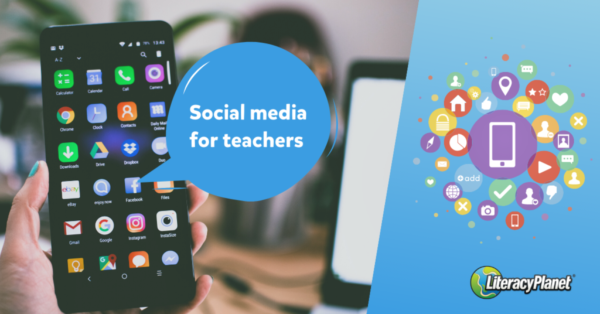
In a world where food, dates, and flights are a couple of clicks away – it can all be very overwhelming. Especially when it comes to expressing yourself on the World Wide Web as a role model for children and young adults. Where is the line for social media? What do we share, what don’t we share, where should we share it, and when?
We’ve put together some guidelines we think might help teachers navigate this issue:
- Connecting with students on social media.
It seems to be a pretty straight forward answer to this one, though there are still stories out there where teachers got themselves into sticky situations. Where it might seem harmless and you’ll come off tech-savvy and relatable with your students, it’s best to keep the relationship professional and respectable. It often slips our mind that students will have complete access to your personal life with your family, friends and even other colleagues and vice versa.
If you wanted to create a collaborative environment through social media, as we know Facebook Groups a great for teamwork and sharing documents, you could get everyone to create separate clean profiles. Otherwise, there are other tools out there that foster creativity and collaboration – like Twiducate, a walled garden where students and teachers can collaborate freely. - Connecting with parents on social media.
You might enjoy some conversations with the students’ parents and feel there is a friendship there. But this one is one to really think about before hitting that “Connect” and “Accept Request” button. The blurred line between friendship and professional life may quickly turn into “Is it okay if Suzie submits her homework a day late?”. They might feel that because you are “friends” now, they might think they deserve this special treatment.It’s best to keep it professional and the best way to politely decline is to say something along the lines of, “Really sorry, I like to keep my personal life separate from my work life but I really do appreciate the gesture! You’re a great parent and friend.” even better if you could make it a school-wide policy. - Okay, what about connecting with colleagues?
Like any job, connecting with colleagues on social media is great for professional networking and growing your relationships with like-minded people in the industry. This is one where it might be different for each channel, and you’d need to reflect on what you have on each channel. So if you have or know you’ll share inappropriate pictures or posts on a certain channel I’d rethink it. It might be a great opportunity for you to do a social media clean up, delete or archive pictures that you think don’t bring professional joy (as inspired by Marie Kondo). Twitter and LinkedIn are great tools for actively connecting and engaging with professionals in the industry. They aren’t just for finding a new job, many influencing educators like @NicholasFerroni, @deannamascle, @danbrownteacher, Paul Gordon Brown, and Shanika Robinson are highly engaged on social media.
I’d then think carefully about other social media channels like Facebook, Instagram, and Snapchat as those are much more personal and I’d only connect with them if you would consider them as true friends outside of work. - Do I still post about my personal life?
You have a life outside of work – that’s completely normal. So do share personal photos of your life, but I’d recommend sharing that through Facebook, Instagram, Snapchat and other more casual channels. I’d also make sure your accounts on those are completely private, so it’s best to review your profile Privacy Settings in each channel you are on. Think twice about photos that you think won’t reflect you in the best way even though your profile might be private, as whatever you share on the internet is there forever. - What and where are the best channels to post?
Twitter and LinkedIn are the channels you want to be posting regularly about industry updates and how your school is doing. A great way of doing this without much effort is actively engaging (sharing/retweeting, commenting and liking) in posts the school might already have great content and updates. Another way to get inspiration is subscribing to newsletters, hop on Google and look up what teaching channels interest you. Some examples are TeachStarter, TeacherVision, School News, and EdWeek.




